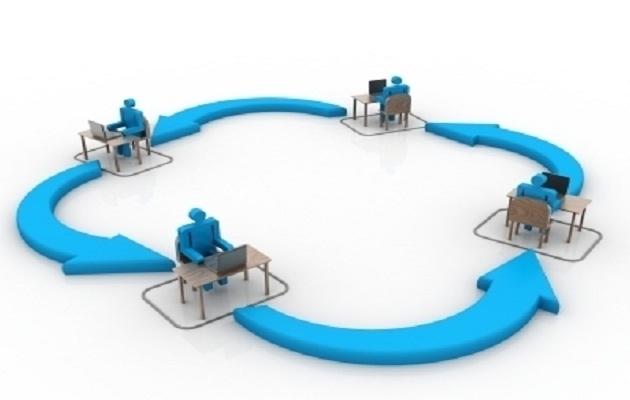In most cases, people's attitudes toward changes in their lives are quite wary. Especially when it comes to changes in the workplace. But, unfortunately, such stresses are not always dependent on the employee of the company, and he often can not influence this process. In this regard, it is very important to immediately deal with all the nuances immediately upon entering a post, because when faced with a similar problem, employees begin to worry, not very understanding how the employment relationship at the company occurs and what is the difference between transfer and relocation.
Translation concept
This means that the employee will be temporarily or permanently transferred to another job or relocated. There is some likelihood that his job functions will change. The issue of translation may concern not only a specific employee, but also the whole unit to which it relates. It is worth noting that during the transfer, the employer remains the same and most often changes the place with his subordinates.

According to the legislation of our country, a manual can only be translated if an employee signs an agreement related to this issue. There are, of course, special cases where this bureaucratic nuance is not required, all of them are provided for in article 72, paragraph 2 of the current Labor Code. Also, referring to the written request or consent of the employee, he can be transferred to the service of another employer on an ongoing basis. It is important to consider that with this type of transfer, the labor contract between the employee and his employer ceases to exist. This is provided for by the legislation of our country and is reflected in article 77 of the Labor Code, in the fifth paragraph. Given this information, you can understand in more detail what is the difference between translation and movement.
Concept of displacement
With the analysis of the concept of "movement", everything is completely different. The employee continues to work in the same organization, the location of his activities also does not change, but he is offered a different workplace. Depending on the needs of the company, the employee can change the unit in which he will perform his duties. In some cases, equipment or workplaces are replaced. But at the same time, his labor functions, which were provided for in the original contract, are fully preserved. All this is reflected in the current legislation of the country, in article 71 (paragraph 2) of the Labor Code. In addition, it is worth noting that, unlike translation, the movement does not require additional consent from the employee.

The only thing that can affect the need for additional coordination of this process between the employer and the employee is the need to amend the labor contract in connection with the movement. But in most cases, if the unit is in the same area, the organization’s leaders remain the same, and only the employee’s workplace or equipment with which he has to work changes, then no additional processing is required. The main thing that you should pay attention to is that, if for some reason the employee’s health does not allow moving, the bosses have no right to do this by force.
The main differences
Considering the laws of labor law, we can safely say that there are three main differences between movement and translation. Firstly, the bosses can change the working conditions that were previously documented in the contract, only if the transfer is made.In the case of relocation, changing any working conditions is unacceptable, in accordance with the current labor law. Secondly, labor functions change during translation, while moving, they remain the same.

The concept of a labor function means the fulfillment by an employee of certain duties that the company assigns to him, as well as compliance with certain local regulations. Thirdly, the last difference between a transfer and a transfer is that when employees move within the organization, the employer is not required to obtain the consent of the workers themselves for such transfers. But it is worth considering that the boss is obliged to notify about planned changes in work in advance so that a person can psychologically prepare for future changes. At the same time, the employee does not have the right to refuse the decision of his superiors to move him within the company.
Change of workplace
There are three varieties of employee movement in an organization. The most common is a change of workplace. If the company where the person works is not very large, then such personnel changes are not even displayed in the reporting documentation. This is general information about how the transfer and movement of the employee occurs, the differences are clearly visible during the consideration of this information.

An employee is transferred to another table or an office is allocated where he will perform his duties, and problems rarely arise between employees and the management team. If we are talking about moving to a large enterprise or plant, the employee can be transferred to another building. In this case, the management is obliged to inform him in advance about future changes in his working position.
Movement between departments
An employee can be sent to another branch of the company, change the department in which he works and so on. In most cases, the addresses of such structures differ. To be different from the transfer, moving to another job must be carried out within the same locality. This refers to the territory of one settlement, the movement should not go beyond it. If the employee is moved beyond the boundaries of the administrative-territorial section, then this will already be a full-fledged transfer.
Equipment change
This is the type of movement that involves the replacement of units, machines and other devices by which the employee fulfills his duties. For example, the driver of the company was provided with a car of a more modern brand for the transport of goods.

Thus, his labor duties at the enterprise did not change, but there was a transfer from one vehicle to another. If the machine or any other unit is assigned to the employee and this is reflected in the contract, then it will be necessary to carry out the transfer. This is another difference between translation and movement.
Types of transfers
There are two main types of translation - it is permanent and temporary. The reason for them may be not only a change in the management of the company and its needs, but also the state of health of the worker. He can be transferred temporarily to another job, until for medical reasons he can not perform his duties in full. In addition, the cause of the transfer may be a disaster or any other circumstances of a similar format that temporarily affected the state of the company and employees are not able to continue their activities in the same place.

The main difference between moving and transferring is that in the second case, the employee completely changes his place of service. Translations are distinguished into three groups, the first takes place within the framework of one company, but the employee is entrusted with performing completely different duties. In the second case, the person is transferred to another organization, where he will have a completely different leadership. And the third is the transfer of the entire enterprise to another locality.
What common
We examined all the differences between moving and transferring employees at the enterprise, but despite the differences in these two concepts, there are common features that provoke workers to have difficulty in separating these terms. And the main common property of these concepts is that the employee’s work will change.

But if in the first case this does not greatly affect his work, then in the second he will expect dramatic changes. In addition, in large companies, that in the opposite case, the authorities must warn their subordinates about the upcoming changes in advance.
Conclusion
Having examined in detail the concept and types of translations, the difference from movement becomes not only logical, but also understandable. Understanding these concepts, you can prevent a situation where the instructions of the authorities about the transfer or relocation take workers by surprise. Naturally, any changes are frightening, especially if they relate to employment, but in reality there is nothing terrible or inexplicable in these phenomena. Understanding what exactly awaits the worker, it will be much easier and calmer for him to get used to after changes in his labor duties.
